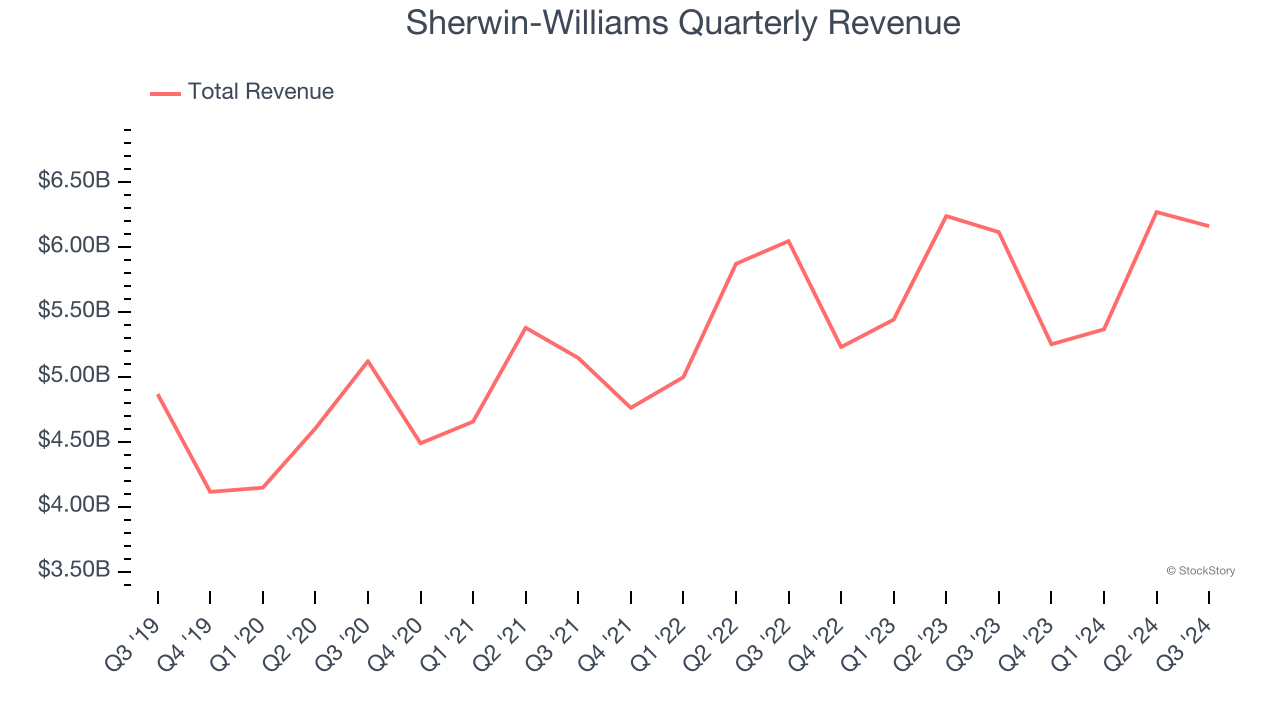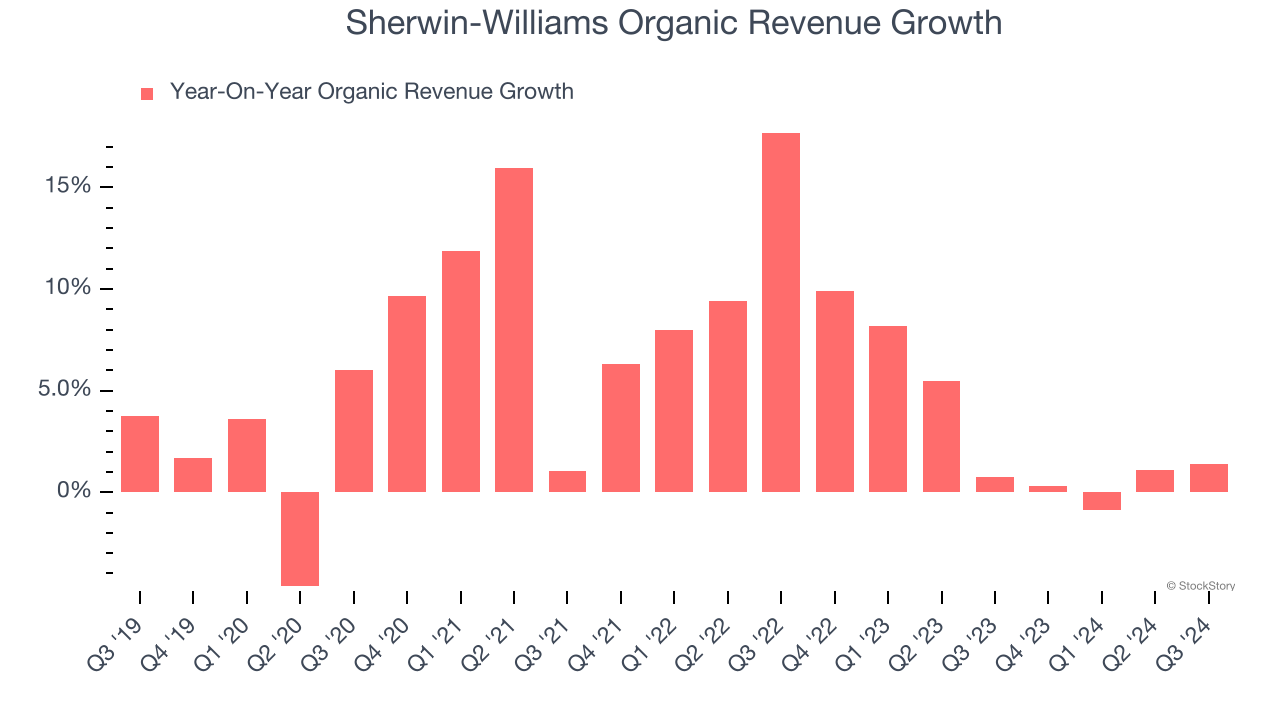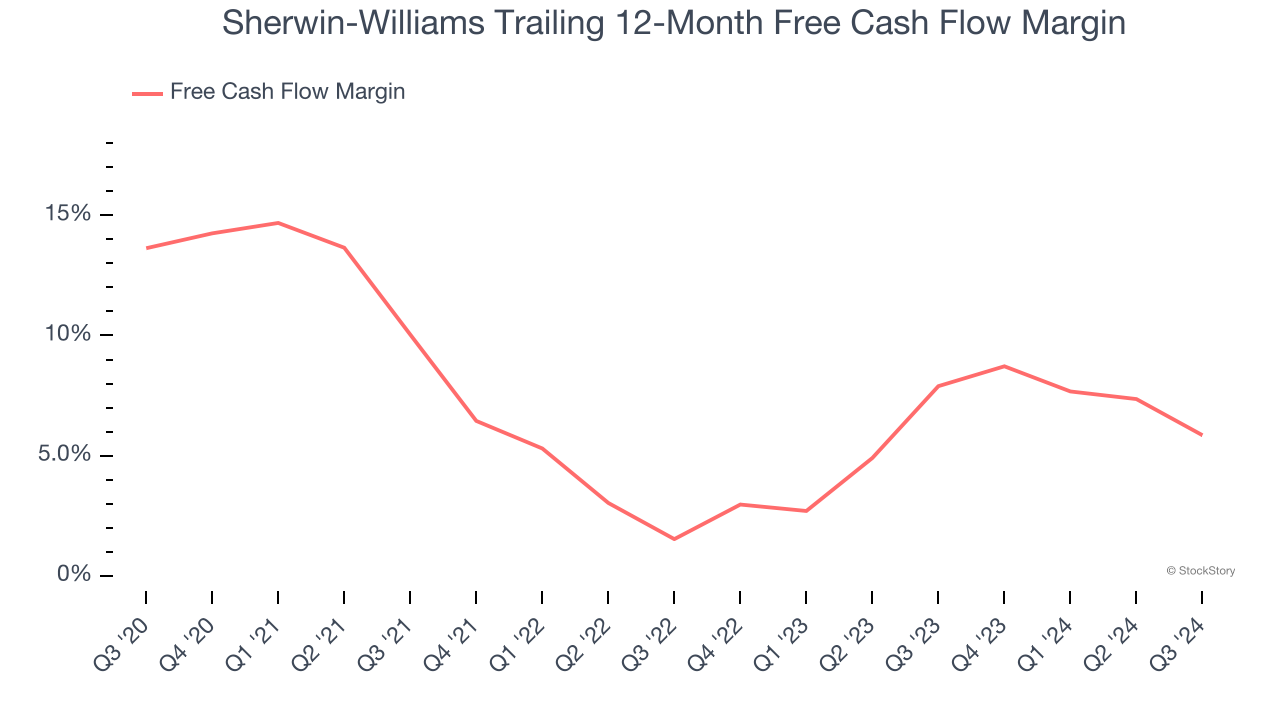
Sherwin-Williams’s 13% return over the past six months has outpaced the S&P 500 by 6.7%, and its stock price has climbed to $335.99 per share. This run-up might have investors contemplating their next move.
Is now the time to buy Sherwin-Williams, or should you be careful about including it in your portfolio? Get the full breakdown from our expert analysts, it’s free.We’re happy investors have made money, but we don't have much confidence in Sherwin-Williams. Here are three reasons why there are better opportunities than SHW and a stock we'd rather own.
Why Is Sherwin-Williams Not Exciting?
Widely known for its success in the paint industry, Sherwin-Williams (NYSE: SHW) is a manufacturer of paints, coatings, and related products.
1. Long-Term Revenue Growth Disappoints
A company’s long-term performance is an indicator of its overall quality. While any business can experience short-term success, top-performing ones enjoy sustained growth for years. Unfortunately, Sherwin-Williams’s 5.2% annualized revenue growth over the last five years was tepid. This was below our standard for the industrials sector. 
2. Slow Organic Growth Suggests Waning Demand In Core Business
In addition to reported revenue, organic revenue is a useful data point for analyzing Building Materials companies. This metric gives visibility into Sherwin-Williams’s core business because it excludes one-time events such as mergers, acquisitions, and divestitures along with foreign currency fluctuations - non-fundamental factors that can manipulate the income statement.
Over the last two years, Sherwin-Williams’s organic revenue averaged 3.3% year-on-year growth. This performance was underwhelming and suggests it may need to improve its products, pricing, or go-to-market strategy, which can add an extra layer of complexity to its operations. 
3. Free Cash Flow Margin Dropping
If you’ve followed StockStory for a while, you know we emphasize free cash flow. Why, you ask? We believe that in the end, cash is king, and you can’t use accounting profits to pay the bills.
As you can see below, Sherwin-Williams’s margin dropped by 7.8 percentage points over the last five years. If its declines continue, it could signal higher capital intensity. Sherwin-Williams’s free cash flow margin for the trailing 12 months was 5.9%.

Final Judgment
Sherwin-Williams isn’t a terrible business, but it isn’t one of our picks. With its shares outperforming the market lately, the stock trades at 26.5× forward price-to-earnings (or $335.99 per share). This valuation tells us a lot of optimism is priced in - we think there are better investment opportunities out there. Let us point you toward The Trade Desk, the nucleus of digital advertising.
Stocks We Like More Than Sherwin-Williams
With rates dropping, inflation stabilizing, and the elections in the rearview mirror, all signs point to the start of a new bull run - and we’re laser-focused on finding the best stocks for this upcoming cycle.
Put yourself in the driver’s seat by checking out our Top 6 Stocks for this week. This is a curated list of our High Quality stocks that have generated a market-beating return of 175% over the last five years.
Stocks that made our list in 2019 include now familiar names such as Nvidia (+2,691% between September 2019 and September 2024) as well as under-the-radar businesses like Comfort Systems (+783% five-year return). Find your next big winner with StockStory today for free.




